#Drawing exercices
Explore tagged Tumblr posts
Text



I finally played Slay the Princess. About time. The existential horror and romance was *mwah*. My compliments to the authors. I'll probably play Scarlet Hollow next.
Bonus:

#stp#slay the princess#I rly loved the voices#Smitten#Hero#Opportunist#the Narrator#The Thorn#(yes I am a sucker for the enemies to lovers trope even if it was a tad expeditive here)#(the scene for the smooch is pretty funny tho)#I'll probably draw the whole gang design bc the exercice is too fun
309 notes
·
View notes
Text

Request for @nethershell, their OC Ignacio el Rojo!
#wakfu#sacrier#oc#request#back to the sillies!#can you believe I choose the form with the most hands?#ON PURPOSE?????#some artistic liberties have been taken regarding the body lava/rock proportion#but I tried and I couldn't figure out how to make it look good 100% rock :/#I'm sorry it didn't looked cracked it looked random ;_;#is it technically lava or magma if it is inside a rock body?#anyway this conclude my week of taking request thanks yall who sent me stuff it was a great exercice/#Now I have run out of excuses not to draw my own oc🥲#manesart#ankama oc
37 notes
·
View notes
Text
Free drawing classes, exercises and fundamentals of drawing.
52 notes
·
View notes
Text
studying? sorry, you mean attempting to quickly draw my blorbos with the limited onenote tools?
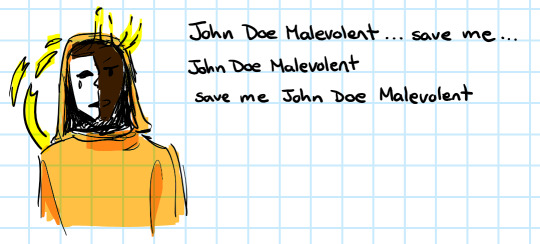
#i actually kinda like the way he turned out#and in my defense i DID study i was just taking a lil break :3#i love how some of my best doodles come from me procrastinating on studying#like i also drew some arthurs as well as one of those elders mentioned in part 40#not today. but like on other days#which is rlly cool from my pov bc i like it when i actually end up drawing stuff :3#cuz drawing is cool even if youre not the best at it#makes me feel nice like i accomplished smth#and tbf i did!!! i made a lil guy!! look hes right there :))#anywya imma stop talking now and get back to doing my physics exercices#malevolent#malevolent podcast#john malevolent#john doe malevolent
53 notes
·
View notes
Text
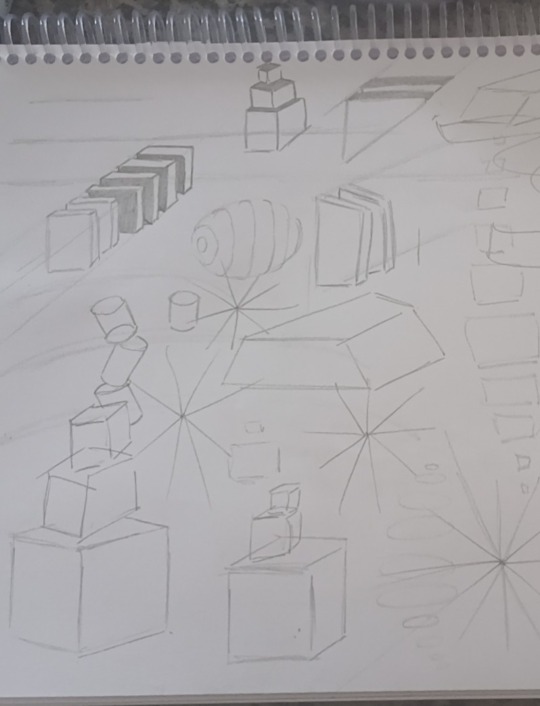
#my art#myart#artists on tumblr#art#tumblr art#small artist#exercices#culture#drafts#drawings#drawinyourstyle#drawing
2 notes
·
View notes
Text

I hate not posting anything, so here you get some of my homeworks. I'm doing a comic school to improve my art.
#traditional art#illustration#art#pencil#pencil drawing#drawing#drawing artwork#black and white#landscapes#homeworks#water landscape#exercices#traditional drawing#traditional illustration#i want to draw new stuff too
5 notes
·
View notes
Text
can i be the sinovial fluid inside the joints
hugging each other is not enough, i want to be the blood flowing through your veins
#sorry to ruin your beautiful post op#but this is the first thing that crossed my mind#also. I'm obsessed with rheumatoid arthritis so i ended up knowing a lot about joints and they are AWESOME#anyway now I'm going to try to salvage this by staying poetic and true#i think your joints actually represent a big part of your freedom#like. in many forms of rheumatism the muscles will remain unaffected. but you might still not be able to move freely#because deterioration of the joint space generally causes some much pain#it's the only thing that allow you to move without constant pain due to your bones rubbing against eachother#drawing. dancing. playing music or games. everything depends on your joints working correctly#so please take care of them. do some joint strengthening exercices. be careful not to bear to much weight.#and watch out for autoimmune disorders as they are very common causes is rheumatism#and of course take care of the rest of your body. but this is joint appreciation post
6K notes
·
View notes
Text

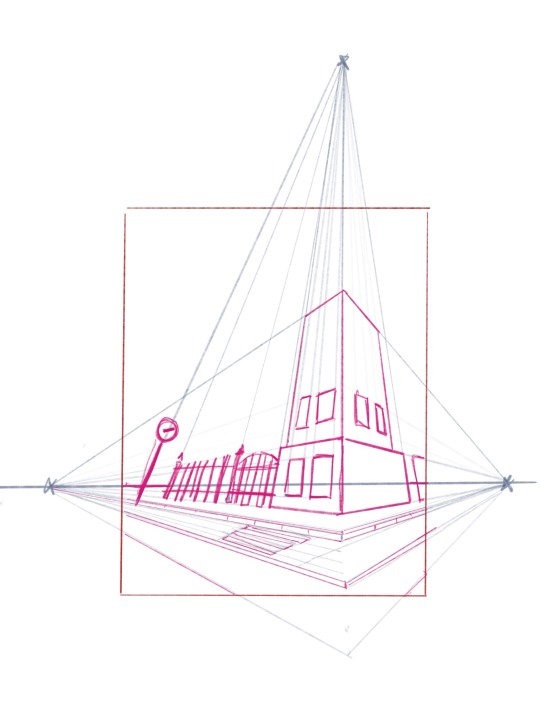
0 notes
Text
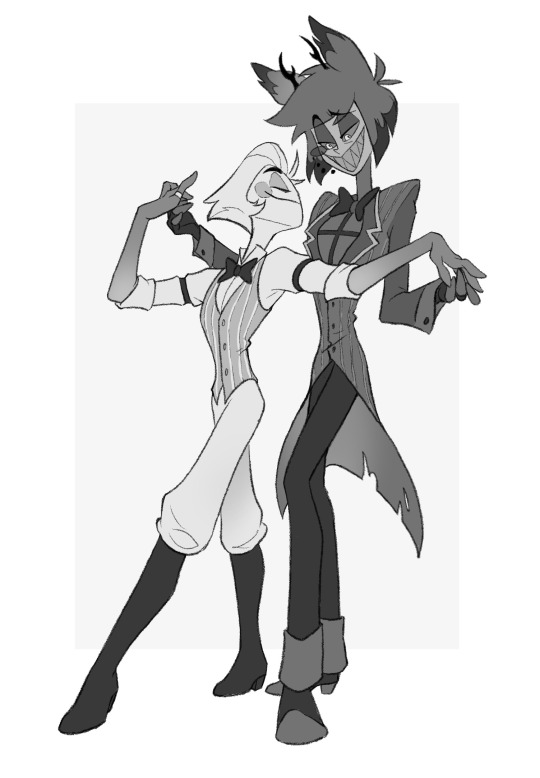
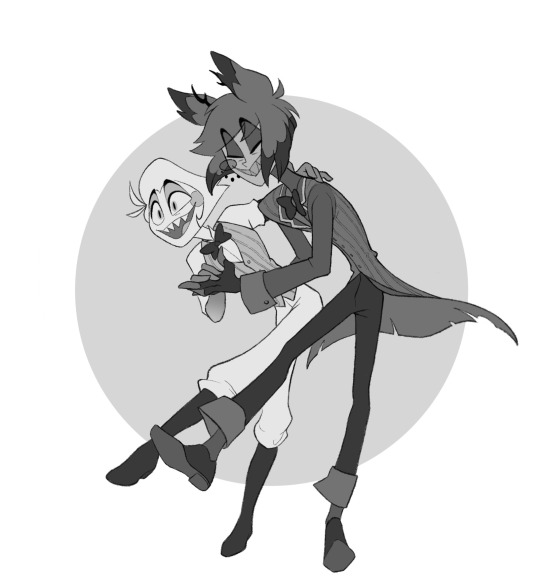
I was about to share those only on twitter, but I guess they can go to tumblr too! Style exercice for myself trying to replicate the original stylisation of the character and adapt this to DANCE (I love to draw character dancing!)
#radioapple#alastor x lucifer#hazbin hotel#hazbin lucifer#hazbin alastor#hazbin hotel fanart#I want to see them get along#I want to see a happy lucifer
4K notes
·
View notes
Text
So uuhh first time posting anything here. You would think in 2 years of lurking I would have figured out how this plateforme works…
Anyway Ninjago fanart time :) !

Last summer I had the magnificent idea to draw the biggest amount of Ninjago caracters I could by using one of @deeppinkman-artbase s expression gridds. Took me 6 months to finish.
It was a good exercice in making faces trough and I bet I would have never drawn some of these fellows otherwise.
Uh, hope anyone enjoys ! More bellow








#ninjago#ninjago fanart#ninjago fandom#lego ninjago#ninjago dragons rising#dragons rising#my art#face expression#art challenge
526 notes
·
View notes
Text

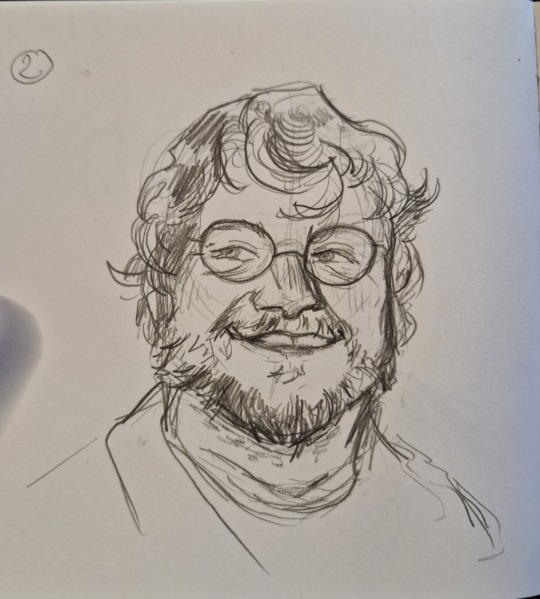

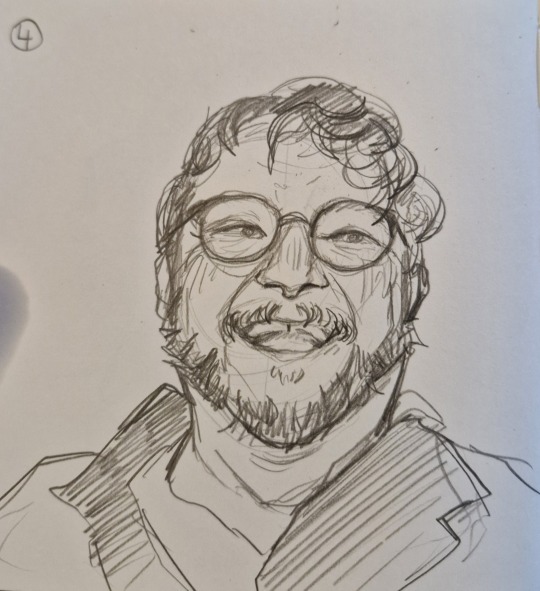
A few sketches of Guillerno del Toro for practice. to then draw Deathman from Death Stranding in all forms B]
That's funny exercice !
84 notes
·
View notes
Text
Sleepover !

I wanna improve until I feel ready to draw a nalu comic ����
My anatomy is still lacking. I'm training for this month on Quickpose gesture drawing (I recommand you the exercice if you're an artist)
I must say I'm quite happy with Natsu's face on this one but I wanna focus on drawing emotion next
147 notes
·
View notes
Text










Some ghosts for your soul
Sometimes when I’m a little tired I just draw random spot and black lines and try to fin some characters into those shapes…… there’s a similar exercice nammed automatic drawing or smth like that but it sound far more professional than whatever silly creatures Im drawings……Wich one is your favorite ?
18 notes
·
View notes
Text
TWST Fanfics ideas - Classes exercices
I was wondering... what are the clases exactly? What do they learn in it? So here are my guess:
In the « normal » class (music, math, art….) the exercices listed here would be in addition of the « normal » exercices. Also I give a list of 10 potential exercices per class, but you can imagine others
~~~~~~~~
In a "Practical Magic" class they would focus on everyday magic for chores. The exercises could include: 1. Cleaning Charms: Students practice spells to clean objects or spaces without manual labor. 2. Cooking Spells: Learning to prepare meals with a wave of a wand, including chopping, stirring, and temperature control. 3. Repairing Enchantments: Casting spells to mend broken items, from clothing to furniture. 4. Gardening Magic: Using magic to tend to plants, making them grow faster or shaping them into artistic forms. 5. Laundry Spells: Enchanting clothes to wash, dry, and fold themselves. 6. Organization Charms: Spells that sort and organize personal belongings, books, or tools. 7. Protective Wards: Setting up magical barriers to keep homes clean and safe from pests or intruders. 8. Weatherproofing Spells: Enchantments to protect against weather, like waterproofing or temperature regulation. 9. Light Charms: Magical ways to illuminate spaces efficiently. 10. Summoning Spells: Conjuring objects to hand, saving time on searching for misplaced items.
~~~~~~
In a "Conjuration" class, the focus would be on summoning objects, creatures, or elements from thin air or from distant places. Here are some exercises: 1. Basic Summoning: Students learn to summon simple objects like feathers or stones to their hands. 2. Targeted Conjuration: Practicing conjuring items from specific locations, such as retrieving a book from a shelf. 3. Creature Summoning: Safely summoning small magical creatures and learning to interact with them. 4. Food Conjuration: Conjuring edible items, focusing on getting the taste and temperature right. 5. Elemental Conjuration: Bringing forth elements like water or fire, controlling their shape and intensity. 6. Conjuring Clothes: Instantly outfitting oneself with appropriate attire for different occasions. 7. Multiplication: Learning to duplicate objects, which is a complex form of conjuration. 8. Conjuring from Nature: Drawing materials directly from natural sources, like summoning water from a lake or leaves from a tree. 9. Advanced Conjuration: Summoning complex mechanisms or devices, understanding their assembly and function. 10. Emergency Conjuration: Quick conjuration drills for situations requiring immediate access to tools or aids.
~~~~~~
In a "Magical Potion" class, students would learn the delicate art of brewing magical concoctions with various effects. Here are some potential exercises: 1. Ingredient Identification: Recognizing and categorizing potion ingredients by their magical properties. 2. Mixing Methods: Mastering the techniques of stirring, shaking, and combining potion ingredients. 3. Temperature Control: Learning the precise temperatures needed for different stages of potion brewing. 4. Timing Practice: Developing a sense of timing for adding ingredients and the duration of brews. 5. Safety Protocols: Understanding the importance of safety when handling dangerous or volatile substances. 6. Potion Analysis: Testing and analyzing the effects of potions on inanimate objects or consenting magical creatures. 7. Remedy Brewing: Creating potions that heal ailments or counteract poisons. 8. Enhancement Elixirs: Concocting brews that temporarily enhance abilities or senses. 9. Transformation Potions: Experimenting with potions that can change one's appearance or species for a short time. 10. Invisibility Mixtures: Perfecting the tricky art of brewing potions that render the drinker invisible.
~~~~~~~
In an "Alchemy" class, the curriculum would likely explore the mystical side of transforming substances into new forms, Alchemy would also be a form of magical chemistry class. Here are some exercises: 1. Metal Transmutation: Practicing turning base metals into gold or silver, starting with small quantities. 2. Elixir Crafting: Brewing elixirs that promote longevity or enhance physical abilities. 3. Philosopher's Stone Theories: Studying the legendary Philosopher's Stone and attempting to replicate its properties. 4. Substance Purification : Learning to purify and refine substances to increase their magical potency. 5. Gemstone Synthesis: Creating precious gemstones from common minerals through alchemical processes. 6. Liquid to Solid Transmutation: Transforming liquids into solid forms, such as water into crystal. 7. Herbal Alchemy: Using plants and herbs to create powerful extracts and essences. 8. Magical Ink and Paper Making: Producing materials that can hold enchantments or spells. 9. Alchemical Symbols: Understanding and using runes to enhance alchemical reactions. 10. Advanced Alchemy: Attempting more complex transmutations and understanding the ethical implications of alchemy.
~~~~~~~
In a “Digital Engineering” class, students would likely explore the intersection of magic and technology. Here are some exercises:
1. Magical Circuit Design: Learning to create circuits that are powered by magical energy. 2. Enchanted Programming: Writing code that interacts with magical objects or creatures. 3. Rune-Based Computing: Using ancient runes to perform computations and process magical data. 4. Golem Programming: Crafting and programming magical automatons for various tasks. 5. Magical Interface Development: Designing interfaces that allow wizards to interact with digital devices. 6. Virtual Spell Simulation: Using virtual reality to practice spells in a controlled digital environment. 7. Enchanted Object Fabrication: 3D printing objects with embedded magical properties. 8. Magical Network Security: Protecting magical databases and networks from unauthorized access or curses. 9. Spellware Development: Creating software that enhances or channels magical abilities. 10. Technomancy Projects: Integrating technology and magic to create innovative solutions to common magical problems.
~~~~~~~~~~
In a “Magic Analysis” class, students would delve into the theoretical aspects of magic and its practical implications, to understand them and maybe creating your own. Here are some exercises:
1. Spell Structure Decomposition: Breaking down spells into their basic components to understand how they work. 2. Magical Flow Charting: Mapping out the flow of magical energy in spells and enchantments. 3. Ritual Analysis: Studying the steps of magical rituals to determine their purpose and effectiveness. 4. Magical Artifact Examination: Investigating the history and magical properties of various artifacts. 5. Potion Formula Deconstruction: Analyzing potion recipes to understand the chemical and magical reactions involved. 6. Enchantment Efficiency Testing: Measuring the strength and duration of enchantments to optimize them. 7. Magical Language Syntax: Exploring the grammar and syntax of magical languages and their impact on spellcasting. 8. Magical Ethics Debate: Discussing the moral implications of different magical practices. 9. Historical Magic Research: Examining historical texts to understand the evolution of magical practices. 10. Magical Theory Papers: Writing and peer-reviewing academic papers on various topics in magical theory.
~~~~~~~~~~
In an “Ancient Curses” class, students would explore the history, creation, and counteraction of curses from ancient times. Here are some exercises that might be included:
1. Curse Identification: Learning to recognize different types of curses and their symptoms. 2. Historical Curse Study: Examining ancient texts and artifacts to understand the origins of famous curses. 3. Curse Crafting: Understanding the components and ethics of creating curses (theoretical exercises only, magic analysis basics needed). 4. Protection Amulets: Designing and creating amulets that protect against curses. 5. Counter-Curse Development: Practicing spells and rituals that can counteract or break curses. 6. Curse Simulation: Role-playing scenarios to understand the impact of curses and practice countermeasures. 7. Language of Cursing: Studying ancient languages and scripts that were traditionally used to cast curses. 8. Ethical Implications: Discussing the moral considerations and consequences of curse usage. 9. Curse Removal Techniques: Learning various methods to cleanse objects, places, or individuals of curses. 10. Field Research: Visiting historical sites believed to be cursed and conducting investigations.
~~~~~~~~~~
In a “Defense Magic” class, students would learn how to protect themselves and others from various magical threats. Here are some exercises:
Shield Spells: Casting protective barriers to deflect or absorb magical attacks.
Counter-Spells: Learning spells that can negate or reverse the effects of incoming spells.
Disarming Techniques: Practicing spells and maneuvers to disarm opponents without causing harm.
Magical First Aid: Applying spells and potions to treat injuries caused by magical means.
Dark Arts Defense: Understanding and defending against dark magic, including curses and hexes.
Stealth and Concealment: Using magic to hide one’s presence or escape detection.
Anti-Poison Spells: Identifying and neutralizing magical poisons and toxins.
Magical Combat: Engaging in controlled duels to practice defensive and offensive spells.
Mind Protection: Strengthening mental defenses against magical intrusion and manipulation.
Environmental Defense: Using magic to manipulate the surroundings for protection, such as creating barriers or camouflage.
~~~~~~
In a class dedicated to “Poison Making,” which would be a highly controlled and ethically sensitive subject, students might engage in the following theoretical exercises:
Toxicology Basics: Understanding the properties of various toxins and their effects on living organisms.
Antidote Formulation: Learning to create antidotes for common poisons.
Safe Handling Procedures: Training in the safe handling, storage, and disposal of toxic substances.
Poison Detection: Practicing spells and techniques to detect the presence of poison in food and drink.
Historical Poisons Study: Researching historical uses of poison and the evolution of toxicology.
Simulated Poison Brewing: Theoretical exercises in brewing poisons with harmless substitutes.
Ethical Debates: Discussing the moral implications of poison use and the responsibilities of a poison maker.
Magical Containment: Learning to magically contain and neutralize poisons to prevent accidents.
Field Identification: Recognizing poisonous plants and creatures in their natural habitats.
Legal Knowledge: Gaining an understanding of the legal restrictions and regulations surrounding poisons.
It’s important to note that such a class would emphasize the importance of using this knowledge for educational purposes only, with a strong focus on safety, ethics, and legal compliance.
~~~~~~~~
In a class focused on “Changes and Comparisons of Abbreviated Spells in Ancient and Modern Magic History,” students would likely explore the evolution of spellcasting techniques and the efficiency of spell abbreviations over time. Here are some exercises that could be part of this class:
Spell Evolution Timeline: Creating a timeline to visualize the changes in spellcasting from ancient to modern times.
Abbreviation Analysis: Comparing the original long-form spells with their modern abbreviated versions to understand the changes in language and technique.
Efficiency Studies: Measuring the effectiveness and speed of casting abbreviated spells versus their full-length counterparts.
Historical Context: Studying the historical events that led to the development of abbreviated spells.
Cultural Impact: Examining how different magical cultures influenced the abbreviation of spells.
Language Shifts: Exploring how changes in magical languages have affected spell abbreviations.
Spell Adaptation: Practicing the adaptation of ancient spells into modern abbreviated forms.
Magical Linguistics: Understanding the linguistic principles that govern the creation of effective spell abbreviations.
Ancient Scripts: Learning to read and interpret ancient magical scripts where original spells were recorded.
Modern Usage: Discussing the role of abbreviated spells in contemporary magical society and how they fit into everyday magical use.
~~~~~~~~~~~
The “History of Magic” class would be about exploring the origins and development of magical practices. Here’s how the class might be:
Ancient Civilizations: Studying the role of magic in ancient exctinct societies.
Magical Artifacts: Examining historical artifacts and their uses in various cultures.
Famous Magicians: Learning about prominent figures in magical history and their contributions.
Evolution of Spells: Tracing the development of spells from ancient incantations to modern-day practices.
Magical Creatures: Investigating the historical accounts of magical creatures and their interactions with humans.
Witch Trials: Analyzing the social and political factors behind witch trials and their impact on magical practices. (assuming there was witch trials at some point in their history, and a time where mages weren't common)
Renaissance Magic: Exploring the resurgence of magical interests during certain times.
Magical Literature: Reading and discussing key texts that have shaped magical theory and practice.
Modern Magic: Understanding the transition from traditional to contemporary magic in the context of technological advancements.
Field Trips: Visiting historical sites and museums to see firsthand the remnants of magical history.
~~~~~~~~~~
In “Animal Languages,” students would learn about the communication methods used by various magical and non-magical creatures. Here are some exercises that might be included:
Basic Animal Sounds: Starting with the sounds made by common creatures (like cats) and understanding their meanings.
Magical Linguistics: Studying the structure of animal languages and how they differ from human speech.
Non-Verbal Communication: Observing and interpreting body language and other non-verbal cues used by animals.
Spell-Assisted Communication: Using spells to facilitate understanding between humans and animals.
Creature Vocalization Practice: Mimicking creature sounds to communicate directly with them.
Field Studies: Conducting fieldwork to observe and interact with animals in their natural habitats.
Magical Translation: Learning spells or using magical devices that translate animal languages.
Historical Animal Speech: Researching ancient texts for references to legendary creatures and their languages.
Interspecies Diplomacy: Role-playing scenarios that require negotiation and communication with magical creatures.
Conservation Ethics: Discussing the importance of preserving magical creatures and their languages.
~~~~~~~~~
In “Astrology”, students would explore the celestial bodies from a scientific perspective while also delving into the mystical aspects that have influenced human culture. Here are some exercises that might be part of this class:
Stargazing Sessions: Using telescopes to observe planets, stars, and other celestial phenomena.
Celestial Navigation: Learning to navigate using the stars and understanding the historical importance of this skill.
Astrological Chart Creation: Drawing and interpreting astrological charts based on the positions of celestial bodies.
Mythology and Constellations: Studying the myths associated with constellations and their origins.
Planetary Influence: Discussing the believed influences of planets and stars on human behavior and events.
Astronomical Calculations: Performing calculations to predict celestial events like eclipses and planet transits.
Space-Time Magic: Exploring theoretical magic that could be influenced by astronomical phenomena.
Astrological Predictions: Practicing the art of making predictions based on astrological signs and movements.
Cosmic Spellwork: Investigating spells and rituals that draw power from celestial events.
Scientific Debates: Engaging in discussions about the intersection of astronomy, astrology, and magic.
~~~~~~~~~~
In “Biology” class, students would study the life processes and organisms. Here are some exercises:
Magical Microscopy: Using enchanted microscopes to observe the cellular structure of magical plants and creatures.
Potion Ingredients Study: Examining the biological properties of common potion ingredients.
Genetics: Learning about the hereditary traits of common and magical creatures.
Ecosystems: Studying the interactions between magical creatures and their environments.
Plant Cultivation: Growing and studying plants with or without magical properties in a controlled setting.
Creature Dissection: Dissecting magical or common creatures (ethically sourced) to understand their anatomy and/or magical organ functions.
Field Trips: Visiting various habitats to study magical and common creatures and plants in their natural settings.
Conservation Magic: Learning spells and techniques for the conservation and protection of species.
Disease Research: Investigating diseases that affect creatures and how to cure them.
Biological Spell Development: Creating spells that can influence biological processes in plants and animals.
~~~~~~~~~~
In “Physical Education” class, the focus would be on maintaining physical health and learning how to incorporate magic into enhancing physical abilities. Here are some exercises that might be included:
Magical Warm-Ups: Starting each class with stretches and light exercises enhanced by warming spells.
Enchanted Obstacle Courses: Navigating obstacle courses that change magically, requiring quick reflexes and agility.
Broomstick Aerobics: Engaging in flying exercises that improve balance and coordination while on a broomstick.
Strength Spells: Learning spells that temporarily increase strength for lifting or moving heavy objects.
Magical Sports: Playing magical versions of traditional sports.
Endurance Charms: Using charms to boost endurance during long-distance running or swimming.
Flexibility Enchantments: Applying enchantments that enhance flexibility and prevent injuries.
Dance Magic: Incorporating magical elements into dance routines for a fun and active workout.
Meditation and Focus: Using meditation techniques to improve concentration and mental stamina.
Magical First Aid: Learning basic first aid spells for treating minor sports injuries.
~~~~~~~~~~~~~~~~~~
In “Flying” class, students would learn the art of flying, whether it be on broomsticks, magical board, or through levitation spells. Here are some exercises that might be part of the curriculum:
Broomstick Basics: Learning how to mount, dismount, and handle a broomstick properly.
Levitation Spells: Practicing spells that allow one to float or fly without the aid of objects.
Flight Safety: Understanding the safety protocols for flying, including protective spells and charms.
Aerial Maneuvers: Mastering basic flying techniques such as turns, stops, and speed control.
Magical board Handling: If applicable, learning to control and fly on magical board.
Group Flights: Participating in synchronized flying exercises to build teamwork and coordination.
Altitude Adaptation: Acclimating to higher altitudes and learning how to adjust for air pressure changes.
Racing Techniques: Engaging in friendly races to improve agility and speed.
Emergency Landings: Practicing how to land safely in case of an emergency or spell failure.
Weather Spells: Using spells to navigate and adapt to different weather conditions while flying.
~~~~~~~~~~~~
In “Swimming” class, students would learn not only traditional swimming techniques but also how to incorporate magic into their aquatic activities. Here are some exercises:
Water Adaptation Spells: Casting spells that allow students to breathe underwater and withstand pressure changes.
Aquatic Mobility Charms: Learning charms to enhance swimming speed and agility in the water.
Merfolk Communication: Studying the language and customs of merfolk to interact with them during underwater excursions.
Underwater Navigation: Using magical means to navigate through murky or enchanted waters.
Magical Marine Life: Identifying and studying the behaviors of magical creatures that live in water.
Water Safety Enchantments: Applying protective enchantments to prevent drowning and other water-related accidents.
Diving Techniques: Practicing diving spells that allow for smooth entry into the water from great heights.
Temperature Control Charms: Learning to regulate body temperature to comfortably swim in cold waters.
Underwater Spellcasting: Mastering the art of casting spells while submerged and dealing with the resistance of water.
Rescue and Recovery Spells: Training in spells and procedures for rescuing others from aquatic dangers.
~~~~~~~~~~
In “Music” class, students would explore musical arts, with and without magic. Here are some exercises that might be included:
Instrumental Enchantment: Learning to play and enchant instruments so they can be played magically without physical touch.
Magical Music Theory: Studying the theory behind music and how it interacts with magical frequencies.
Enchanted Choir: Singing in a choir where voices are magically harmonized.
Rhythmic Spellcasting: Combining spellcasting with rhythm to enhance the potency of spells.
Musical Creature Communication: Using music to communicate with creatures that respond to magical melodies.
Historical Magical Composers: Learning about famous magical composers and their contributions to the musical world.
Sound Manipulation: Practicing spells that manipulate sound waves to create music or silence.
Magical Performance: Preparing and performing in magical concerts or recitals.
Music and Emotion: Exploring how music can influence emotions and states of mind magically.
Instrument Crafting: Building magical instruments with unique properties and sounds.
~~~~~~~~~~~
In “Art” class, students would likely explore various forms of creative expression, possibly incorporating magical elements into their artwork. Here are some exercises:
Enchanted Drawing: Practicing drawing techniques with enchanted pencils that bring sketches to life.
Potion Paints: Creating paints from magical potions that change color or have other unique properties.
Sculpting with Magic: Using transfiguration spells to sculpt materials like clay or stone without physical tools.
Illusionary Art: Crafting art that moves or changes, creating illusions that trick the eye.
Magical Photography: Taking and developing photographs that capture magical auras or movements.
Wearable Art: Designing clothing or jewelry with enchantments that alter their appearance.
Art History: Studying the works of famous magical artists and their impact on magical society.
Artistic Spellwork: Learning spells that enhance artistic abilities or inspire creativity.
Magical Murals: Painting murals with spells that make them interact with the environment.
Restoration Techniques: Using magic to restore and preserve ancient artworks and artifacts.
~~~~~~~~~~~~~
In “Mathematics” class... well students would likely explore both the theoretical and practical applications of math, but may use magic too. Here are some exercises other than the "common" ones:
Arithmancy: Studying the magical properties of numbers and their use in spell-crafting and divination.
Geometric Spell Patterns: Drawing geometric shapes that form the basis of complex spell structures.
Potion Measurements: Precisely measuring and calculating potion ingredients for perfect brews.
Magical Algebra: Solving equations that predict magical phenomena or outcomes.
Astronomical Calculations: Using mathematics to predict celestial alignments and their magical effects.
Transfiguration Geometry: Applying geometric principles to accurately transfigure objects into different shapes.
Probability and Chance: Calculating probabilities to predict the outcomes of magical experiments.
Magical Graph Theory: Mapping out the connections between magical nodes or ley lines.
Temporal Equations: Understanding the mathematical principles behind time-related spells.
Mathematical Proofs: Proving theorems that underpin magical laws and principles.
~~~~~~~~~~
In “Health” class that would be held twice a year by the nurse(s), students would likely focus on both physical and magical well-being. Here are some exercises:
Magical Nutrition: Learning about magical foods and their effects on health and magical abilities.
Body Enhancement Charms: Understanding the ethical use of charms that temporarily enhance physical abilities.
Magical Hygiene: Learning spells and practices for maintaining personal and environmental cleanliness.
Disease Awareness: Studying magical and non-magical diseases, their symptoms, and prevention methods.
First Aid Training: Gaining practical skills in magical and non-magical first aid techniques.
#disney twisted wonderland#twst#twst wonderland#disney twst#twisted wonderland#twisted wonderland classes#exercices
61 notes
·
View notes
Text
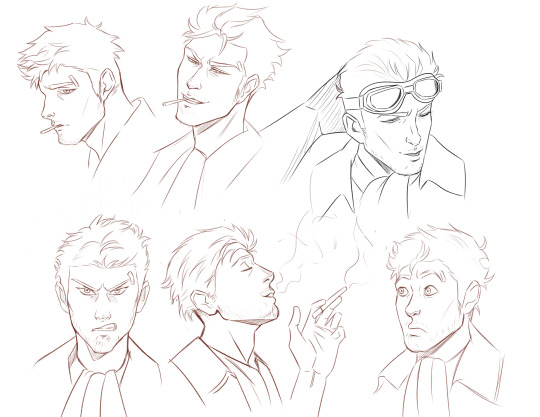
Last weekend I did a little expression exercise, and it came across Cid… Because I think there isn't enough drawing of Cid Highwind, even though there is so much potential ♥ Well, on the other hand, his glasses… what hell! *****
Le week end dernier j'ai fait un petit exercice d'expression, et c'est tombé sur Cid… Parce que je trouve qu'il n'y a pas assez de dessin de Cid Highwind, alors qu'il y a tellement de potentiel ♥ Bon par contre ses lunettes… quel enfer!
#cid highwind#cid#final fantasy 7#fanart#ff7 rebirth#ff7#drawing#final fantasy#final fantasy vii#clip studio paint
81 notes
·
View notes
Note
Hey ! I have a little question : how do you start to draw ? I want to start but idk how-
And, for the digital art, what app to used for it ?
(I'm sorry for my bad english, it's not my first language, in fr :
Hey ! J'ai une petite question : comment on commence a dessiner ? J'aimerai commencer mais jsp comment-
Et, pour l'art digital/digital art, quel application utiliser ?)
Bonjour Anon ^^
Bonnes questions! 💗
On va y aller en français parce que, comme disait le Roi de France, "Car tel est notre plaisir" et puis parce que je l’ai déjà expliqué en anglais quelque part dans mon tag #arttechnique donc, pour une fois, la communication se fera en Langage de Grenouille. 🇫🇷
Pour commencer sache que tu as ouvert la boite de Pandore, la réponse va donc être longue. Alors, « comment on commence à dessiner ? ».
1 - Papier/Crayon. C’est loin d’être une plaisanterie, on commence avec un papier et un crayon. Pas besoin d'avoir du matériel sophistiqué et onéreux, j'ai commencé avec le crayon et le carnet à la con de chez Carrefour. De plus, quand tu vois ce que fait Alan Lee avec juste le dit crayon, tu n'as pas besoin de plus. C'est vraiment très bien pour s'exercer/démarrer. Après, si tu veux commencer directement en digital, tu peux le faire bien évidemment soit avec un iPad soit avec un ordinateur et une palette graphique mais très honnêtement, le papier/crayon offre une bonne base
2 - S'y mettre. Ça peut paraitre con comme conseil mais c'est comme à la piscine il va bien falloir rentrer dans l'eau, ne serait-ce que dans le petit bain. C'est bien beau d'avoir du matériel et de se répéter qu'on "va s'y mettre un jour" mais si on repousse l'échéance, ça ne va pas marcher. Il faut se convaincre que Rome ne s'est pas fait en un jour et qu'au début, ça va être tordu et que tu vas dessiner n’importe quoi. La procrastination au nom du perfectionnisme est un mal réel mais arriver à l'occulter est un belle victoire.
Pour ce faire, on commence doucement par gribouiller des choses qu'on aime. Conseil qui sonne sans doute comme une lapalissade absolue mais au début, je dis bien au début, on peut rester dans sa petite zone de confort pour booster la motivation. Tu aimes les chats ? Dessine un chat. Tu aimes les fleurs ? Dessine une pivoine. Tu aimes le ballet ET Emmanuel Macron ? Bref, tu sais ce qu'il te reste à faire (on ne kink shame pas, je suis sure qu’il y a des amateurs quelques part). Cependant, petit à petit, il va falloir prendre plus de risques et se forcer un peu à dessiner des choses qu'on n'aime moins pour progresser mais au commencement, il n'y a pas de mal à gribouiller Les Chevaliers du Zodiac, n'importe comment.
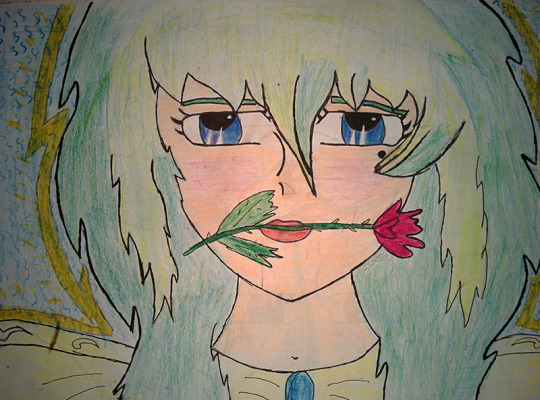
Le Chevalier du Poisson après s’être pris un mur. J'avais 8 ans ok ?
Bon, je mets un « cut » parce que ça ne va pas être gérable.
3 - Suivre des tutos et ne pas avoir peur de l'aspect technique surtout quand on commence à aborder l'anatomie et la perspective. Et c'est là, qu'il va falloir sortir un peu de sa zone de confort pour faire des exercices pour pratiquer les ombres et lumières, la perspective, comprendre les points de fuites, les poses dynamiques. Il y a plein de tutoriels sur YouTube, tu as aussi des bouquins mais je pense qu'une vidéo est plus parlante. C'est vraiment TRÈS utile. Tu as des vidéos comme "apprendre à dessiner" ou "perspective pour débutant", "la théorie des couleurs pour les nuls", etc...C'est là que tu vas voir que pour dessiner un chat, un visage, un bateau il y a des règles pour simplifier une forme, un visage, un corps. Alors oui, c'est chiant de dessiner 12 fois la même main ou la même sphère éclairée différemment mais ça sert. Bref, commencer à dessiner, ça va être commencer à comprendre comment transposer la réalité en « 3D » vers un support « 2D », la feuille ou le canevas Photoshop, peindre ce que l’on voit et non pas ce que l’on croit voir, décomposer les formes, comprendre les couleurs. Une fois encore, ça va prendre du temps, mais ça viendra.
Pareil pour les applis de dessin que tu vas utiliser si tu commences en digital. Si tu ne sais pas faire quelque chose, va suivre des tutos sur Youtube. Il y a aussi des reels sur Instagram qui ne sont pas mal du tout car ils montrent des "trucs" comme des raccourcis clavier ou des façons de modifier les pinceaux (brushes) de Photoshop ou Clip Studio Paint.
4 - S'exercer par gribouiller tout et n'importe quoi, faire des croquis de...cafetière, bouquin, chaussures, prise électrique, la petite cousine, le gros voisin, la dame du pressing. 1) c'est marrant et 2) les défis techniques ne sont pas toujours là où on le croit 3) ces exercices permettent de comprendre ce dont je te parlais plus haut s’agissant de la décomposition des formes ainsi que de la façon dont la lumière frappe les objets.
5 - Utiliser des références. Je ne le dirais jamais assez, utiliser des références n’est pas tricher ! Des illustrateurs confirmés comme Alex Ross ont un studio où ils prennent des photos de leurs assistants, leurs amis, eux-mêmes, pour avoir une base de travail. Si tu veux dessiner un bateaux pirate, va chercher une photo de bateau pirate sur Internet. On n’est pas « un vrai artiste » parce qu’on dessine de tête ou sans gommer. 🙃
6 - Travailler régulièrement pour progresser. Je sais c'est dur de trouver du temps avec le lycée, la fac, le boulot, les transports, la vie de famille, etc...mais le mieux est d'arriver à dessiner un peu régulièrement, ça sera plus efficace que deux heures toutes les deux semaines. Les cours de géo sur les bassins sédimentaires sont faits pour ça. J'AI RIEN DIT.
7 - Ne pas se décourager. Je me répète mais les artistes étant leurs pires critiques, le chemin vers la satisfaction va être long. Tu vas commencer par copier tes artistes préférés et ta tête va exploser car un jour tes dessins vont ressembler à Mucha et le lendemain ça sera à One Piece et le jour suivant Moebius ou un web-comic coréen. C'est encore plus dur pour les artistes débutants aujourd'hui car ils sont confrontés, Tiktok après Tiktok, tableau Pinterest après tableau Pinterest, à un déluge constant d'influences, à une stimulation artistique telle qu'elle en devient inaudible pour un cerveau toujours plus sollicité. Savoir ce qu'on veut, se concentrer, construire son style sans se perdre est, je pense, un des grands défis des artistes débutants en 2024.
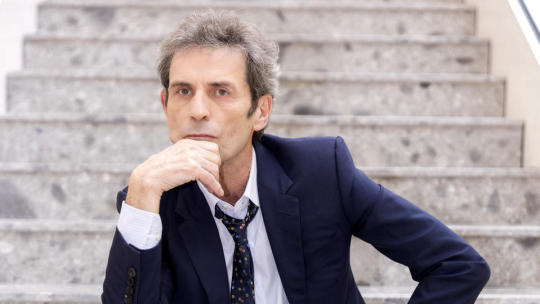
C'était joliment dit. Merci d'avoir suivi Ce soir ou jamais, on se retrouve demain soir.
Il va surtout falloir que tu prennes en compte en tant que débutant que quand tu vas commencer, tes progrès vont être proche de ça :
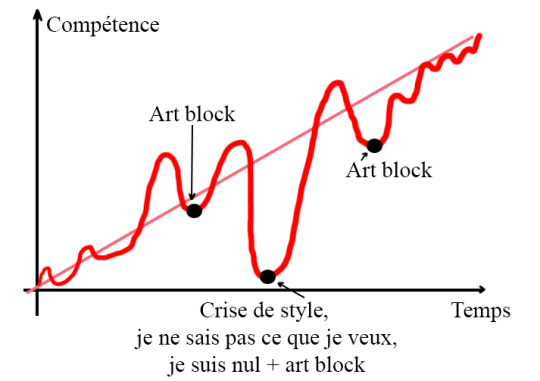
Ils ne seront pas linéaires mais, tu progresseras. Un petit "art block" de temps en temps, du découragement, mais surtout beaucoup de joie et de satisfaction quand tu auras dessiné quelque chose qui te tiens à cœur pour la première fois, même si tu détesteras ce même dessin deux mois plus tard, c'est ça être un artiste, félicitations!
8 - Ne pas se comparer à des illustrateurs de folie. Paix à son âme mais si tu vois une vidéo du regretté Kim Jung Gi qui dessinait des fresques entières sans traits de construction, à main levée, tu vas te dire "Mais punaise, pourquoi j'essaie ?". N'y penses pas, fais ta vie, à ton rythme. Pareil avec les gens de ton âge. Ne te compare pas à un mec de 13 ans à Singapour qui dessine déjà comme un artiste confirmé. On s'en fout. C'est une exception, grand bien lui fasse, on l'embrasse, cœur sur lui, mais ce n’est pas toi. Bref, l'inspiration OUI, la comparaison NON.
9 - Prendre des cours de dessins. Être autodidacte et s’entrainer tout seul, c’est bien, mais prendre des cours si on est perdu n’est absolument pas honteux. Il y a des cours municipaux, des ateliers parfois à la mairie, à la médiathèque de ta ville, etc...Alors oui, tu vas dessiner un pot de fleurs et une pomme avec Mamie Geneviève, retraité de la Mairie de Brie-Comte-Robert mais tu vas avoir un prof qui va t'expliquer les bases si tu sens que tu ne vas pas y arriver seul.
Et, pour l'art digital/digital art, quel application utiliser ?
Moi, j'utilise Photoshop mais c'est payant (et assez cher)
Pour commencer, je te recommande d'autres applications bien moins chères comme Krita (gratuite) ou, si tu as un iPad, Procreate. C'est environ 8€ (ça a peut-être augmenté depuis le temps où je l'ai acheté) mais pour tout ce que cette appli peut faire, c'est donné. Moins connue mais également gratuite, Fire Alpaca, très honorable aussi!
Clip Studio Paint est également très bien. Tu peux l'avoir soit avec un système d'achat unique, soit un system de souscription comme tu peux le voir ici.
Voilà ! Bref, il faut s’y mettre, se lancer, dessiner n’importe quoi pour se faire la main, suivre des tutos, parce que la technique c’est important, utiliser des références et ne pas se décourager.
J’espère avoir répondu à ta question et comme disait Marie-Pierre Casey :
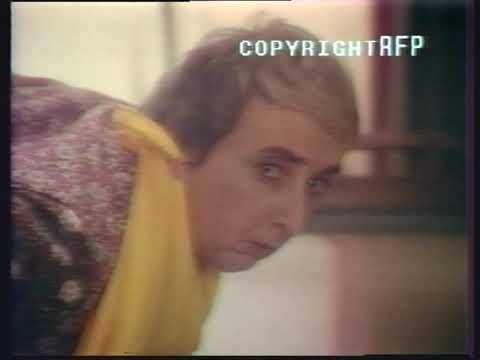
"Je ne ferai pas ça tous les jours!" (même si personne ne m’a demandé de faire aussi long).
Si vous n’avez pas la réf, demandez à vos parents.
Passe un bon dimanche et courage ! On reste motivé !! 💗
79 notes
·
View notes